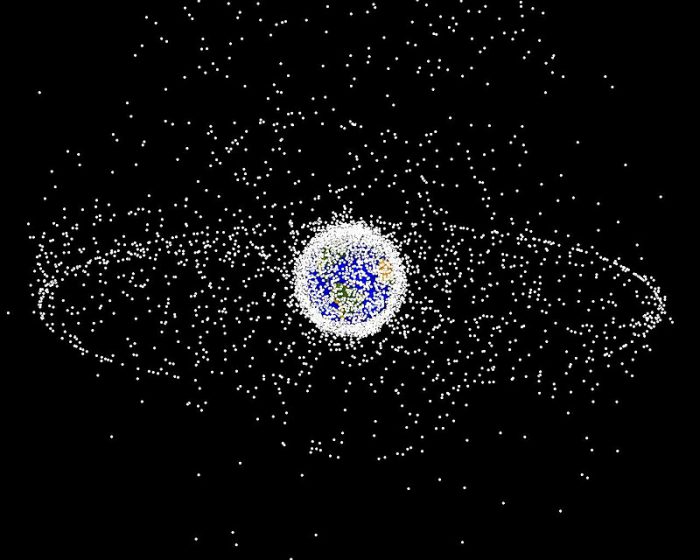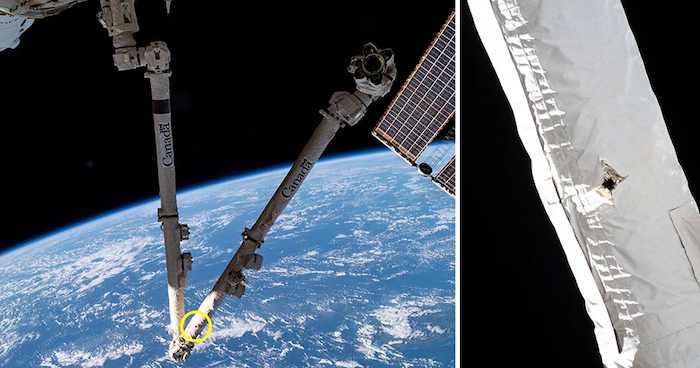The Canadarm2 is large robotic arm on the International Space Station (ISS). It is used by the crew to perform all sorts of tasks outside the station that require a big helping hand! But on May 12, a routine inspection of the arm found that something was not right.
There was a small tear in the thermal blanket surrounding one of the boom arms. The metal boom itself was also damaged. And the culprit?
Space debris.
The high speed junkyard blues

A computer-generated image that shows the location of some of the larger pieces of space debris orbiting Earth. The sizes are exaggerated. (Wikimedia Commons)
Also known as space junk, space debris is the term for the many (and we mean 'many') different kinds and sizes of human-made pieces that are randomly orbiting Earth. Some of these things are quite large—discarded pieces of rockets from past launches or 'dead' (no longer functioning) satellites. Others are around softball-sized. Then there are the very small pieces up there, things the size of a cherry or a cherry pit ... or way smaller.
In total, it is estimated that there are at least 170 million pieces of space debris. The European Space Agency (ESA) says that 130 million of them are smaller than a millimetre. No biggie, you say? Well ...
The problem is that these things are all whipping around the Earth at around roughly 40,000 km/h (25,000 mph). That's around 20 times faster than a bullet. At that speed, anything is a real hazard. NASA knows this, which is why they've set up the United States Space Surveillance Network (SSN) to track space debris. So far, SSN has located and tracks around 23,000 of the larger pieces of space debris.
A warning sign
It is hoped that new reuseable rockets can help reduce space junk. (Getty Embed)
Sadly, the much smaller debris is nearly impossible to track. Which brings us back to the Canadarm2 and the ISS.
The damage to the arm itself is not that bad. The crew says it is still working like normal.
But the impact is proof of how the tiniest bits of space junk can puncture metal ... and arrive without warning. The crew of the ISS doesn't even know when this collision happened. On the plus side, space is so vast that the odds of a collision are still fairly low, which is why we don't hear about this sort of thing that much.
But it's not impossible.
It is understandable why the world's space programs are trying to find ways to a) locate more space debris, b) collect as much of that debris as possible, and c) limit how much junk we put up there in the first place. From satellites that collect debris with nets to the reuseable spacecraft that SpaceX is pioneering, the experts know that space travel needs to change to stay sustainable.
 These photos show the damage to the Canadarm2, caused by a small piece of space debris. (CSA/NASA)
These photos show the damage to the Canadarm2, caused by a small piece of space debris. (CSA/NASA)










😯
This is awesome hahaha ❓ ❓ ❓ ❓ ❓ ❓ ❓ 🙂 😉 😀 🙁 😛 😮 😡 😐 😕 😯 😎 😥 😆 🙄 💡 ❗ ❓ 😳